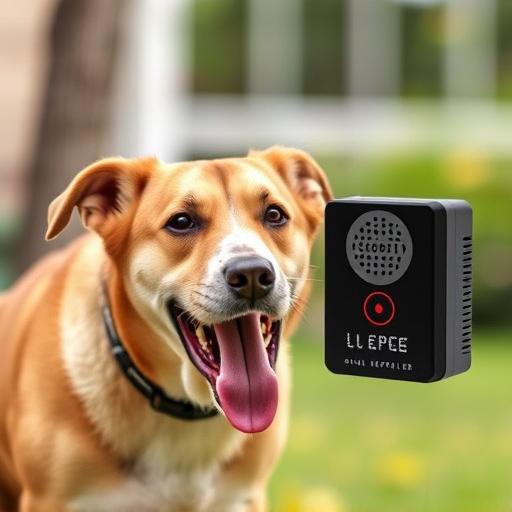Handheld dog deterrents vary in design and carrying methods, catering to diverse user needs and preferences. These devices offer humane alternatives to shock collars, using sound, vibration, or spray to correct unwanted canine behaviors like barking or aggression. Key advantages include portability, ease of use, adjustable settings, and remote control options. Pet owners prefer convenient holsters, pouches, lanyards, or wrist straps for quick access during walks. Safe usage practices, including proper training and responsible carrying methods, are essential for both safety and efficacy of these devices as a last resort.
“Unleash a new approach to canine control with humane dog deterrent electronic devices. This comprehensive guide delves into the world of handheld technology designed to gently deter unwanted behaviors without harm. From understanding the basics to exploring advanced features and safe usage practices, we cover all aspects. Discover innovative carrying methods that ensure convenience and accessibility. Learn how these devices offer a responsible solution for pet owners seeking effective training tools. Optimize your approach with our expert insights into handheld dog deterrent carrying methods.”
- Understanding Handheld Dog Deterrent Devices: A Comprehensive Overview
- Key Features and Benefits of Effective Dog Deterrents
- Different Carrying Methods for Handheld Dog Deterrents
- Safety Considerations and Best Practices for Using Dog Deterrents
Understanding Handheld Dog Deterrent Devices: A Comprehensive Overview
Handheld dog deterrent devices are a popular and effective solution for managing canine behavior, especially in public spaces. These portable tools offer a humane alternative to traditional shock collars by using sound, vibration, or spray to deter unwanted actions like barking or aggression. One of the key aspects to consider when choosing such a device is the handheld dog deterrent carrying method. Various designs feature different ergonomic options, from simple hand-held units to more complex strap-on models. The ideal carrying method depends on individual preferences and specific use cases. For instance, a lightweight, compact design may be best for quick interventions during walks, while a sturdier model with a longer range could suit professional trainers or those managing dogs in larger areas.
Key Features and Benefits of Effective Dog Deterrents
Effective dog deterrents, designed to gently discourage unwanted behavior without causing harm, offer several key features and benefits for pet owners. One of the primary advantages is their portability; handheld devices are easy to carry and use, allowing for flexibility in addressing behavioral issues anywhere, whether at home or during walks. These devices often utilize safe and humane methods like sound, vibration, or spray, targeting specific behaviors like barking, jumping, or aggression.
Additionally, modern dog deterrents come with adjustable settings, enabling customization based on the pet’s size, breed, and sensitivity, ensuring a tailored response for optimal effectiveness. The ability to control and train dogs remotely through different carrying methods, such as pocket-sized devices or lightweight, hands-free harnesses, makes them convenient tools for consistent behavioral management.
Different Carrying Methods for Handheld Dog Deterrents
When it comes to using a handheld dog deterrent electronic device, convenience and ease of use are key factors for many pet owners. One of the primary considerations is how to carry the device while keeping it within easy reach during walks or outdoor activities. Traditional holsters and pouches are popular choices as they securely hold the device and can be clipped to belts or attached to dog leashes, ensuring quick access. These methods are especially useful for those who prefer a more hands-free approach, allowing them to focus on their pet’s behavior without constantly reaching into a pocket or bag.
For added flexibility, some devices come with lanyards or straps that allow users to wear the deterrent around their neck or wrist. This hands-free carrying option is ideal for longer walks or when participating in outdoor sports and activities. It also promotes constant awareness, as the device is always within visual and physical reach, enabling prompt response to any unwanted dog behavior.
Safety Considerations and Best Practices for Using Dog Deterrents
When using any form of dog deterrent, safety should always be the top priority. Electronic devices, in particular, require careful consideration due to their active nature. It’s crucial to follow best practices like ensuring proper training and understanding how the device operates. For handheld dog deterrents, knowing your carrying methods is essential. Always use them responsibly, keeping them out of reach of children and pets, and never targeting vulnerable areas on a dog.
The most effective Handheld Dog Deterrent Carrying Methods involve secure, controlled deployment. This means learning the correct distance to maintain from the dog while activating the device, as well as understanding when it’s appropriate to use it. Regularly test the device in safe environments to familiarize yourself with its range and effectiveness, ensuring you’re using it humanely and only as a last resort.
Handheld dog deterrent devices offer a humane way to manage and train dogs, providing an effective solution for both pet owners and professionals. By understanding the key features, safety considerations, and various carrying methods – such as handheld, tethered, or even remote-controlled options – users can choose the best device for their needs. Armed with this knowledge, folks can ensure safe, responsible use, fostering a harmonious relationship between humans and their canine companions. When used appropriately, these devices can truly revolutionize how we navigate our interactions with our furry friends in various settings.
